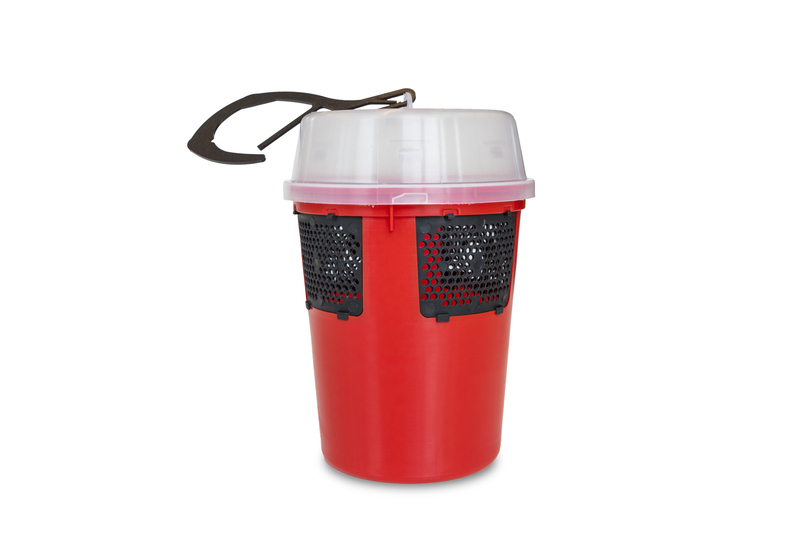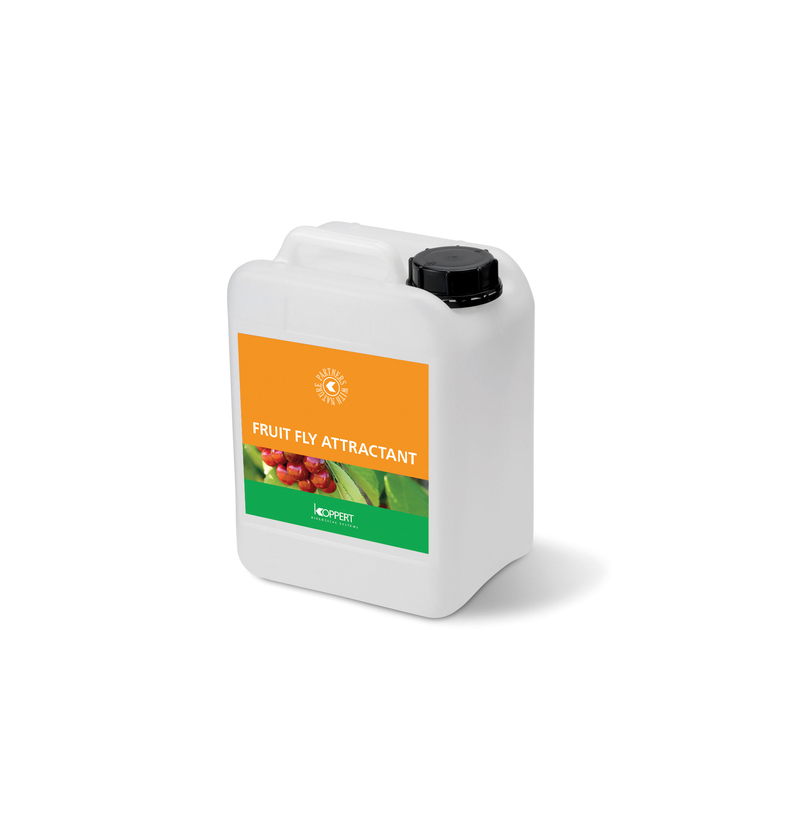Spotted wing drosophila (SWD), a native of south-east Asia, is now a widespread and serious threat to soft and stone fruit crops across the UK. Cherry, raspberry, strawberry, blackcurrant and blueberry crops are particularly at risk, but the pest can also be problematic in grapes, plums and even tomatoes.
Early detection through monitoring (starting in March) is now thought to be crucial to minimizing the impact of SWD on vulnerable crops. Continuous monitoring until November is recommended.
Traps placed in wild areas (hedgerows and windbreaks) in March will help reduce numbers of over-wintered SWD in the environment and slow the build-up of the pest to damaging levels later in the year. Early detection of SWD also ensures that there is ample time for control measures to be put in place, before egg-laying commences as the crops reach the most vulnerable stages of attack (which is usually several weeks before fruit ripening!).
 Koppert Drososan trap
Koppert Drososan trap
Koppert Drososan trap
Koppert’s Drososan traps are easy to use and clean. They are durable and will last for several seasons. The flat base to the trap design aids stability during inspection and re-filling. Their red colouring makes them very attractive to the pest and the mesh openings are large enough for the fruit fly but will keep out unwanted by-catch of larger insects such as bees and wasps/hornets, moths, earwigs and larger flies. Use in combination with our fruit fly attractant for best effect.
- Start by placing traps in wild areas (hedgerows and windbreaks/woodland on field edges); later in the season, traps can be moved into cropping areas one month before the first fruits ripen
- Hang the traps 1 m from the ground in shady/sheltered areas from March onwards, at a minimum density of 10/ha (1/1000 m²)
- Fill each trap with 200 ml of attractant (there is a helpful marker line inside the trap)
- Check the traps each week, recording SWD numbers if required, and replenish/change the attractant every two weeks for best effect

Fruit fly attractant
Based on apple cider vinegar, very attractive to SWD, particularly early in the season when few other food sources are available
The attractant is a clear liquid, enabling easy inspection and identification of catches without the need for rinsing/washing
Unlike wine-based attractants, it will not form a solid surface ‘jelly’ in hot weather